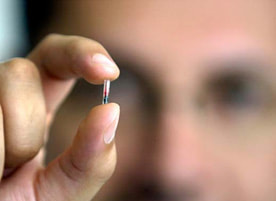 On April 27, 2011, I was getting ready to go to work when our lives changed. Storms had been predicted for that day. We didn't know that they would turn severe and it would happen fast. I stopped getting ready for work, we packed up our valuables into small bags and we hid in an interior room of our house with our leashed dog until the worst passed. I distinctly recall Rich saying to me, very calmly, "stop screaming. You're scaring the dog" as our house lifted up off of the foundation. It was one of the scariest experiences of my life. That was to be the first of two waves off tornadoes to pass through our area that day. We were very lucky compared to some. Many lives were lost that day and countless homes were destroyed. The F1 tornado that crossed our property did some roof damage to all of our structures, blew out some windows, threw debris all over and downed countless tall pines and cedars, but we were not hurt. We spent a really busy week of clean-up with no power, getting our news from a local radio station on a windup radio Rich had picked up a few years earlier and using a Coleman stove to cook. As we listened to radio broadcasts of damage reports, people trying to find family members and the status of places to find gasoline and ice, we also heard countless stories of animals lost and animals found following the storms. As the weeks and months went by, we learned that thousands of animals who would ordinarily not be separated from their families could not be found and were presumed dead or missing. Large numbers of pets ended up being transported out of state and I never quite understood that process well. Surely there was some way to house found animals so that people could reclaim them, right? Wrong. The sad truth is that even under the most ideal of circumstances not related to natural disasters, most pets who are displaced from their homes never get back home. Whether pets go missing as the result of an open door, unlatched gate or natural disaster, the vast majority simply cannot be identified. They cannot talk, most do not wear identification and most are not microchipped.  Which leads to the purpose of this blog. The first Saturday of April of each year is "Every Day is Tag Day." The third week of every April is "National Pet ID Week." Both of these annual events are used to encourage people to take proactive steps to make sure pets can be identified if they get lost or are stolen. Although a lot of people use collars and tags for this, and there is nothing wrong with that (provided cat collars are the breakaway type for safety purposes), nothing compares to the use of a microchip to make sure your pet can be identified. Chips are manufactured by a number of different companies and are available at a variety of prices depending on where you live and what your veterinarian charges to implant the chip. Some chips are sold with the price of registration included and others require a registration fee in addition to the cost of the chip itself. The chip is about the size of a grain of rice and contains a unique number which is a lot like a barcode. It is implanted under your pet's skin (normally at the base of the neck); in some states this can only be done a veterinarian or pet owner. If your pet ends up at an animal control facility, is found by law enforcement authorities or is taken to a veterinarian by a Good Samaritan, he or she can be scanned and the chip will be tracked back to you, provide you registered the chip and kept your information current. I do volunteer work for my local animal control officer and some of the tasks I do relate to trying to get pets back home. I register found pets on a wonderful website called Helping Lost Pets, I prepare "Found" posters using that same website and I post about found pets on his Facebook page so the posts can be shared and we can find owners. Most of the dogs picked up have collars but no tags. One cat picked up a few weeks ago had been recently spayed. Surely she had a home. But we just could not find it because she was not chipped. Very seldom is a chip found in one of the dog who ends up in our animal control system. The good news in our area is that we have a great track record of keeping animals alive with the help of volunteers, donors, rescuers and adopters. Such is not the case everywhere. In many areas of our state and across the country, the fact that pets cannot be identified means that they are destroyed. To honor the animals lost during the April 2011 storms in our state, we our promoting a Chipathon in our area during the month of April. People can make appointments now to have pets microchipped at one of a variety of locations for very low prices. The cheapest chips cost about the same as the price of a large bag of dog food or a couple large containers of cat litter. My personal hope is that chipping of pets will become the norm and not the exception not only in our area, but across the country. Wouldn't it be wonderful if every lost or stolen dog and cat could be reunited with his or her family? If you love your pets or just value them in some way, please have them microchipped. It could honestly mean the difference between life and death for your pet and is just so easy to do.
0 Comments
Your comment will be posted after it is approved.
Leave a Reply. |
AuthorI am an animal welfare advocate. My goal is to help people understand some basic issues related to companion animals in America. Awareness leads to education leads to action leads to change. Archives
July 2024
Categories
All
image courtesy of Terrah Johnson
|

 RSS Feed
RSS Feed